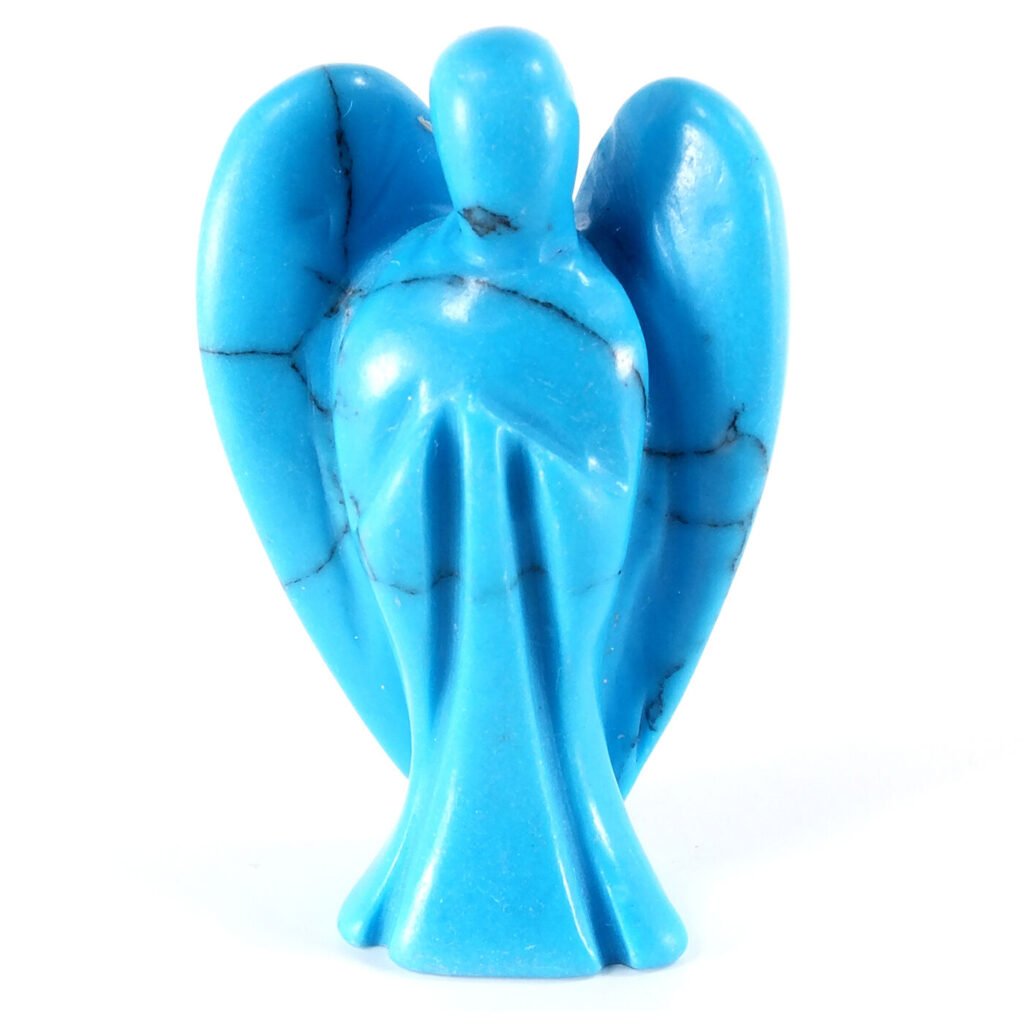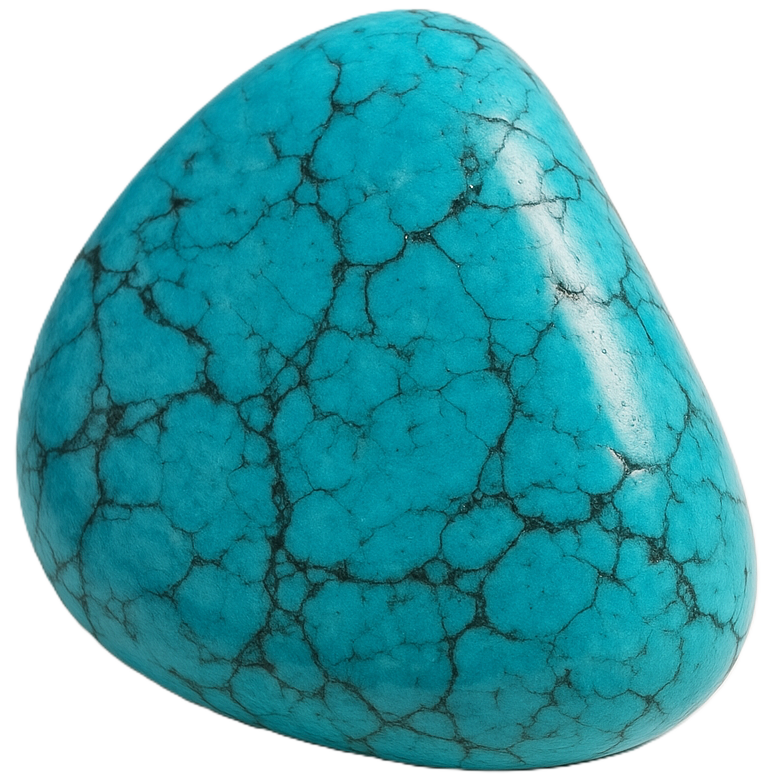
Turquenite, often mistaken for turquoise due to its vibrant blue or green hues, is an eye-catching and affordable gemstone with its own unique charm and properties. A dyed form of howlite, this stone combines the calming energy of howlite with the stunning appearance of turquoise. This comprehensive guide explores its origins, composition, history, and symbolic significance.
Origins of Its Name and Alternate Names
The name “Turquenite” is a combination of “turquoise” and “howlite,” reflecting its identity as dyed howlite that resembles turquoise. Howlite, the base mineral, is named after Henry How, a 19th-century Canadian geologist who discovered the mineral.
Alternate names for Turquenite include “Dyed Howlite” and “Imitation Turquoise.” In the jewellery trade, it is often marketed as a cost-effective alternative to turquoise.
Composition and Physical Characteristics
Turquenite is created by dyeing white howlite, a calcium borosilicate hydroxide mineral, to achieve its striking blue or green hues. The porous nature of howlite allows it to absorb dye easily, making it an ideal candidate for this transformation.
Physical Characteristics and Varieties
- Appearance: Blue or green with black or grey veining, closely mimicking the look of natural turquoise.
- Lustre: Matte to slightly glossy, depending on the finish.
- Hardness: Measures 3.5 on the Mohs scale, making it relatively soft and suitable for lightweight jewellery.
- Structure: Porous and often features natural fractures that enhance its resemblance to turquoise.
Varieties of Turquenite are primarily distinguished by their colour saturation, ranging from pale blue to intense greenish-blue.
Geographical Locations
Howlite, the base material for Turquenite, is primarily found in:
- Canada: First discovered in Nova Scotia and remains an important source.
- United States: Particularly in California and Nevada, where deposits are abundant.
- Mexico: Another key region for howlite mining.
After mining, howlite is dyed to create Turquenite, a process typically performed in jewellery manufacturing hubs around the world.
Historical Usage and Archaeological Finds
As a dyed stone, Turquenite does not have historical usage or archaeological significance. However, howlite itself has been used in carvings and jewellery due to its natural beauty and calming energy.
Turquenite’s affordability and aesthetic appeal have made it a popular choice in modern jewellery, often used in beads, pendants, and statement pieces. It is also a favoured material in bohemian and summer-inspired designs.
Interesting Facts
- Turquenite’s resemblance to turquoise can be so convincing that it is often sold as an affordable alternative to the more expensive gemstone.
- The natural veining in howlite enhances the illusion of Turquenite being turquoise, making it a versatile and attractive option in jewellery.
- Despite being dyed, Turquenite retains the metaphysical properties of howlite, making it a favourite among crystal enthusiasts.
Folklore, Superstition, Legends, and Tales
Turquenite, as a dyed stone, lacks the ancient legends and folklore associated with natural gemstones. However, the base mineral, howlite, has its own legacy in metaphysical traditions.
Howlite has been revered as a stone of patience and tranquillity. In modern practices, Turquenite is seen as a continuation of howlite’s properties, blended with the aesthetic inspiration of turquoise. It is believed to bring calmness and clarity, helping to reduce stress and promote self-expression.
Some crystal healers describe Turquenite as a “bridge stone,” connecting the calming qualities of howlite with the vibrant energy of turquoise. Its bright hues are thought to awaken creativity and inspire action, making it a symbol of balance between reflection and expression.
Mystical Healing Properties
Turquenite is valued for its metaphysical and healing properties, aligned with howlite’s energy:
- Emotional Healing: Promotes calmness, reduces anxiety, and encourages self-acceptance.
- Physical Healing: Believed to assist with sleep disorders, muscle tension, and stress-related conditions.
- Spiritual Healing: Enhances communication, supports creativity, and strengthens intuition.
Astrological Links and the Chakra System
Turquenite resonates strongly with the Throat Chakra, promoting clear communication and self-expression. It is also associated with the Third Eye Chakra, enhancing intuition and mental clarity.
Astrologically, Turquenite is linked to Gemini and Virgo, complementing Gemini’s adaptability and Virgo’s focus on communication and analysis. Its calming energy balances the dynamic and often analytical nature of these signs.
Use as a Birthstone and Wedding Anniversary Gift
Although not recognised as a traditional birthstone, Turquenite is sometimes chosen as an alternative gem for those seeking tranquillity and balance.
As a wedding anniversary gift, Turquenite symbolises communication and harmony, making it a meaningful and budget-friendly option for couples celebrating their journey together.

Turquenite
Calming and empowering, Turquenite soothes stress while enhancing communication. A dyed Howlite often used to embody spiritual clarity and emotional flow.
